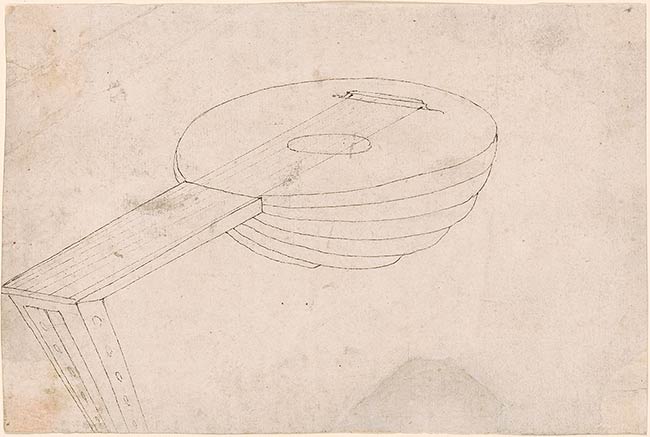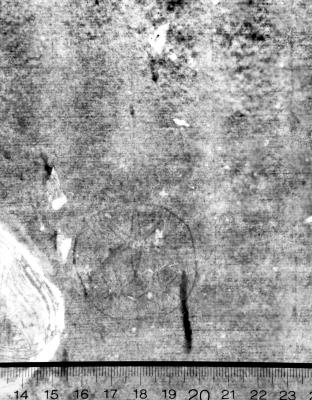
The sheet is one of two perspectival drawings of a lute in the Morgan collection.1 Descended from an Arab instrument and introduced into the West through the Moorish conquest and occupation of Spain (eighth through fifteenth centuries), the lute was popularized in Italy in the early sixteenth century. Portrayals of lutes and other musical instruments were particularly common in intarsia, such as those created for Federigo II da Montefeltro in the studioli of Urbino (1476) and Gubbio. An intarsia from Gubbio preserved in the Metropolitan Museum of Art, New York, depicts a lute as well as its shadow.2 Intarsia with musical instruments also occur in choir stalls of Italian churches and in the door panels of palaces.
The lute in the Morgan drawing is simple and unadorned, suggesting that the artist may have made the drawing as an exercise in perspective and in depicting volume.
Footnotes:
- For the other, see Morgan Library & Museum, New York, inv. 1993.223.
- Metropolitan Museum of Art, New York, inv. 39.153.
Possibly by an instrument maker.
Watermark: Three stars, of different sizes, in a circle.
Scholz, János, former owner.

